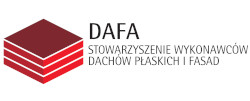mgr inż. Julia Wróblewska, Politechnika Warszawska, Wydział Inżynierii Lądowej
dr hab. inż. Robert Kowalski, prof. PW, Politechnika Warszawska, Wydział Inżynierii Lądowej
prof. dr hab. inż. Marian Abramowicz, Szkoła Główna Służby Pożarniczej
Autor do korespondencji e-mail: Ten adres pocztowy jest chroniony przed spamowaniem. Aby go zobaczyć, konieczne jest włączenie w przeglądarce obsługi JavaScript.
DOI: 10.15199/33.2017.10.42
Powszechnie jest stosowanych wiele metod badawczych, służących do oceny betonu in situ. W badaniach wykorzystuje się zależności korelacyjne do określenia wytrzymałości betonu na ściskanie na podstawie mierzonych wielkości fizycznych. W artykule przedstawiono metody semi-nieniszczące: pull-off, pull-out, break-off, destrukcji wewnętrznej oraz penetracji sondą. Omówiono ich przydatność w zastosowaniu do betonu po pożarze, który charakteryzuje się zmiennością cech mechanicznych w zależności od odległości od ogrzewanej powierzchni elementu. Ograniczenia wymienionych metod wynikają m.in. z ustalonej głębokości w przekroju, na której przeprowadzany jest pomiar. Przybliżone zostały także badania nad nowymi metodami, przeznaczonymi do oceny konstrukcji po pożarze. Polegają one na pomiarze oporu wiercenia w betonie.
Słowa kluczowe: wysoka temperatura, pożar, badania semi-nieniszczące, beton, ocena betonu w konstrukcji.
* * *
Semi-nondestructive methods of the assessment of concrete in structure after fire
There are many test methods commonly used to evaluate concrete in situ. Correlative relationships are applied to determine the compressive strength of concrete on the basis of the measured physical quantities. In the paper semi-nondestructive methods are described: pull-off, pull-out, break-off, internal fracture and probe penetration test. Their usefulness in application to concrete after fire is discussed. Concrete then has variable mechanical properties depending on the distance from the heated surface of the element. The limitations of mentioned methods result, among others, from the fixed depth in cross-section where the measurement is made. Research on new methods for the assessment of concrete in structure after fireis also described. These methods are based on the measurement of the drilling resistance in concrete.
Keywords: high temperature, fire, semi-nondestructive tests, concrete, assessment of concrete in structure.
Literatura
[1] Bungey John H., Marios N. Soutsos. 2001. „Reliability of partially-destructive tests to assess the strength of concrete on site”. Construction and Building Materials 15 (2-3): 81 – 92.
[2] Colombo Matteo, Roberto Felicetti. 2006. „New NDT techniques for the assessment of fire damaged concrete structures”. 4th International Workshop „Structures in Fire”: 721 – 734.
[3] FelicettiRoberto.2009.„Combinedwhile-drillingte chniques for the assessment of the fire damaged concrete cover”. International ConferenceApplication of Structural Fire Engineering: 208 – 215.
[4] Hager Izabela. 2009. „Metody oceny stanu betonu w konstrukcji po pożarze”. 2009. Cement Wapno Beton (4): 167 – 178.
[5] Hager Izabela, Radosław Kiwit. 2012. „Ocena uszkodzeń pożarowych betonu na podstawie głębokości zagłębienia łącznika wstrzeliwanego osadzakiem prochowym”. Cement
Wapno Beton (3): 155 – 159.
[6] Long Adrian E., G. D. Henderson, F. R. Montgomery. 2001. „Why assess the properties of near-surface concrete?”. Construction and Building Materials 15 (2-3): 65 – 79.
[7] PN-EN 12504-3:2006. Badania betonu w konstrukcjach–Część3:Oznaczaniesiływyrywającej.
[8] Tay D. C. K., C. T. Tam. 1996. „In situ investigation of the strength of deteriorated concrete”. Construction and Building Materials 10 (1): 17 – 26.
[9] Wróblewska Julia, Robert Kowalski, Marian Abramowicz. 2017. „Czynniki i zjawiska wpływające na wytrzymałość betonu w konstrukcjach po pożarze”. Materiały Budowlane 538 (6): 42 – 43. DOI 10.15199/33.2017.06.
[10] Wróblewska Julia, Robert Kowalski, Marian Abramowicz. 2017. „Laboratoryjne metody oceny betonu w konstrukcji po pożarze”. Materiały Budowlane 539 (7): 11 – 12. DOI: 10.15199/33.2017.07.04
Otrzymano: 14.08.2017 r.
Materiały Budowlane 10/2017, str. 134-136 (spis treści >>)





























